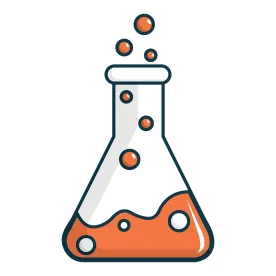The U.S. Chemical Safety and Hazard Investigation Board (CSB) adopted regulations on February 21, 2020, under the Clean Air Act requiring the reporting of certain accidental releases. Their purpose is to enable the CSB to more quickly determine which incidents it should investigate.
The regulations will require reporting within eight hours of an incident that involves:
-
a release of any hazardous substance (not limited to those in Environmental Protection Agency (EPA) or Occupational Safety and Health Administration (OSHA) tables of regulated substances);
-
in any amount (not limited to threshold amounts in EPA or OSHA tables);
-
that is accidental (thus, intentional releases are not covered);
-
from a stationary source (thus, not a vehicle, such as a tanker truck or railcar);
-
into the ambient air (thus, not into another vessel);
-
that causes the death or the in-patient hospitalization of any person (not necessarily an employee), or more than $1 million in property damage.
The report may be submitted by email to report@csb.gov, or by telephone at 202-261-7600.
Although the effective date of the regulations will technically be March 22, 2020, the CSB stated in the preamble to the regulations that, “For one year following the effective date of the rule, the CSB will refrain from referring violations for enforcement, unless there is a knowing failure to report.”
The new regulations and their preamble were published at 85 Fed. Reg. 10074 (Feb. 21, 2020) and will be codified in 40 C.F.R. Part 1604. A federal court had ordered the CSB to adopt final reporting regulations within 12 months. Air Alliance of Houston v. Chem. Safety and Haz. Investig. Bd., 365 F.Supp. 3d 118 (D.D.C. Feb. 4, 2019).
Changes From the Proposal
Two of the most important changes from the proposed version of the regulations concern the length of the reporting period and the definition of a “serious” injury that would trigger the reporting obligation.
The proposed version would have required reporting within four hours. The final version lengthens the period to eight hours.
The proposed version would have required reporting if an injury fell within criteria closely akin to those that OSHA uses for requiring recording of injuries on a log form. As many commenters on the proposal observed, this was a mistake. For example, the U.S. Beet Sugar Association, leading a coalition of agricultural industry trade associations, observed that, “OSHA did not design the recording requirement to sift out which individual cases are severe enough to require it to immediately investigate. That is why OSHA adopted a completely different set of regulations to determine which injuries must be reported.” (Emphasis in the original.) The CSB took the comments to heart, for this aspect of its final regulations is more akin to OSHA’s reporting regulation. Thus, an incident must be reported if it causes the death or the in-patient hospitalization of any person (not necessarily an employee), or more than $1 million in property damage.
Potential Problems With the Final Regulations
Should reports to the National Response Center (NRC) suffice?
In at least one respect, the regulations appear to violate the Clean Air Act, which states that, “Reporting releases to the National Response Center, in lieu of the Board directly, shall satisfy [the CSB’s reporting] … regulations.” 42 U.S.C. § 7412(r)(6)(C)(iii). Despite this, the Board’s regulations impose a requirement even if one has reported the incident to the National Response Center: One must report “the NRC identification number to the CSB within 30 minutes of submitting a report to the NRC.”
In response to protests from various commenters, the CSB offered a weak rationale for this requirement—that the above sentence was not provided for the convenience of the regulated public but for the CSB’s convenience. It stated that, “the language simply provides the CSB with the option of having reports submitted to the NRC instead of to the CSB directly. The statutory language does not confer a right to owner/operators.” A reviewing court will likely disagree.
Should reports to OSHA suffice?
The CSB also rejected requests by commenters that a report to OSHA should suffice. As one commenter stated, “It should not be necessary for the CSB to pile onto distressed employers more bureaucratic reporting requirements when one report would do.” The CSB rejected the requests because, “OSHA’s reporting rule … does not capture all the accidental releases within the CSB’s jurisdiction. For example, an accidental release may result in the death of a member of the general public but no death or injury to an OSHA covered employee. In that instance, there would be no report to OSHA.”
This concern with reports not made to OSHA overlooks that the commenters advocated reliance on reports to OSHA if they were, in fact, made. Moreover, the hypothetical conjured up by the CSB is unrealistic, since one would expect that any incident forceful enough to kill someone outside the plant fence would be forceful enough to kill or seriously injure employees within the plant fence. If an employer reported an incident to OSHA but not to the CSB, the CSB may thus find the validity of its regulation questioned by a reviewing court.
Should a report be required if the release did not have a threshold quantity of an already regulated substance?
One of the sorest points involving the final regulations was that CSB rejected the urgings of many commenters that the regulations cover only releases of chemicals already on EPA’s list of “regulated substances” under the Clean Air Act, and only if the release exceeded the listed threshold quantity. The CSB’s rationale was entirely legal—that the statute did not so limit its investigatory jurisdiction: “There is nothing in the statutory scheme to suggest that a death or serious injury caused by less than a threshold quantity of a ‘regulated substance’ or other hazardous substance falls outside the CSB’s investigatory jurisdiction.”
The Board did not address the fact that the Clean Air Act does not require that its regulations extend to the limit of its statutory authority; it requires that the CSB require reports of “accidental releases … subject to the Board’s investigatory jurisdiction”—not necessarily all such releases. It also did not address a public comment that the Board “should, at least initially, limit the reporting obligation to only listed substances and later determine if omission of unlisted substances so impairs its investigation function as to warrant reconsideration.” Citing court decisions, the commenter stated, “The Board may regulate one step at a time.”
The CSB’s repeated failures to come to grips with important public comments may later come to haunt its attempts to enforce its new regulations.




 />i
/>i

